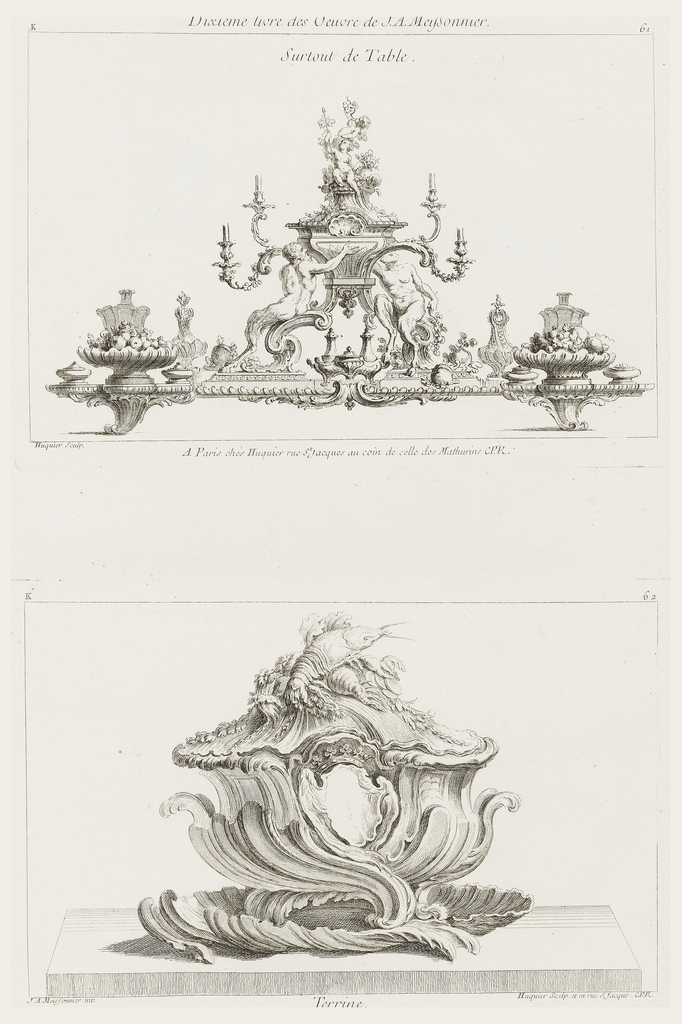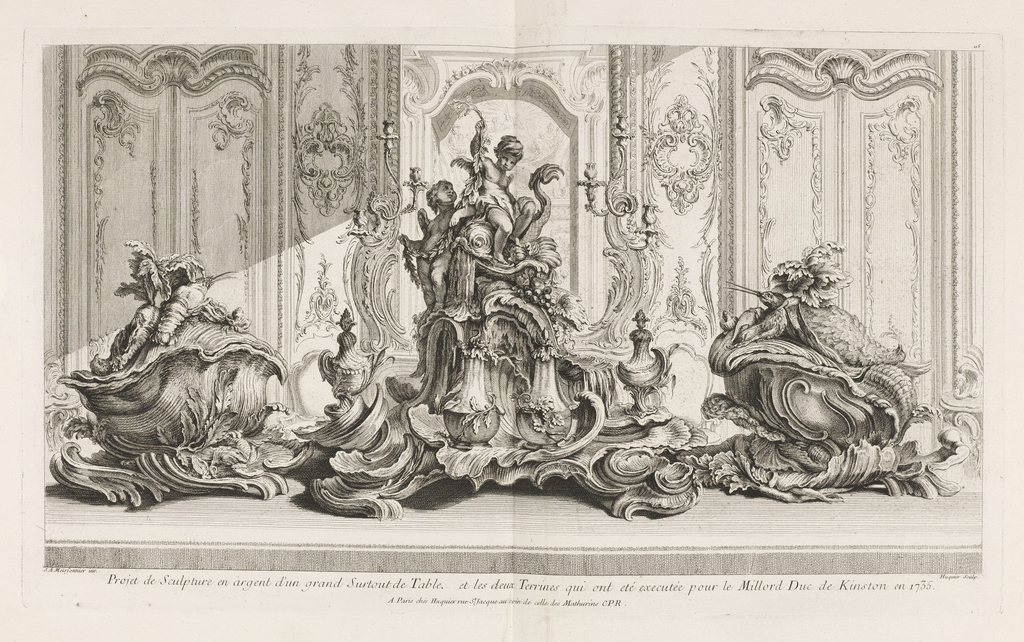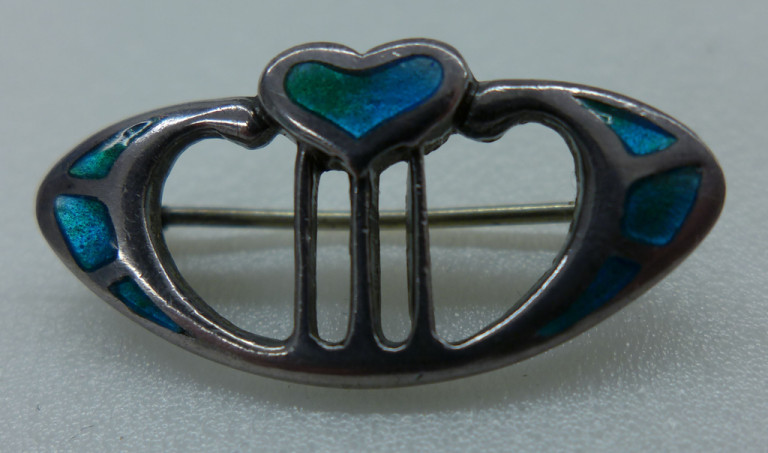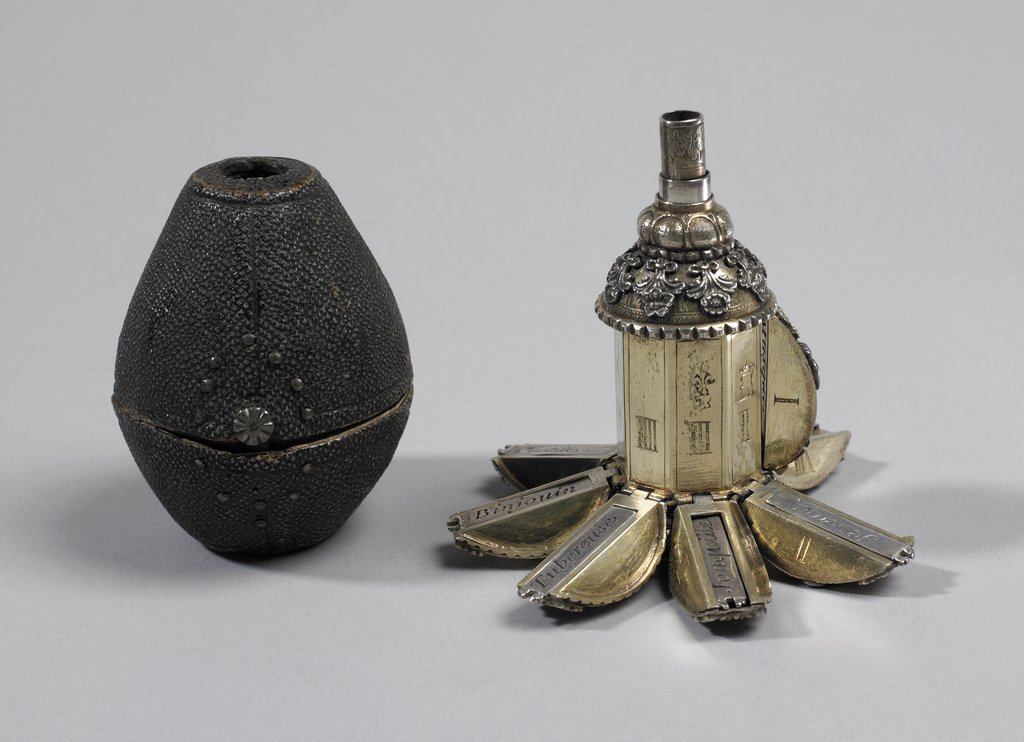The famous silver tureens that the eighteenth–century silversmith Juste-Aurèle Meissonnier designed for England’s Duke of Kingston may be the most celebrated objects of his career. They were etched in a double-page spread in Oeuvre de Juste-Aurele Meissonnier published by Gabriel Huquier around 1748. This volume is one of the rare books acquired by the Cooper...
Eighteenth-century meal services were elaborate affairs, as exemplified in this print showing tureens and a table center piece designed by Juste-Aurèle Meissonnier for Evelyn Pierrepont, Duke of Kingston-upon-Hull in the 1730s. Meissonnier worked for Louis XV, becoming orfèvre du roi (goldsmith to the king) in 1724. This engraving is plate 115 in folio 72 of...
In summer, when weddings are frequent, the thought of objects given in affection or love, makes a visit to the jewelry collection seem appropriate. This heart-form brooch is one of a group of jewelry by Charles Horner (English, 1821-1896) given to the Museum in December. Horner (English, 1821-1896) was an actual silversmith, watchmaker and enamellist...
It is hard to imagine a time when spices were so precious that their containers were designed as jewelry or a rare accessory. Yet, that is what this pomander is; it’s name is derived from the French, pomum ambrae, referring to perfumes and perfumed ointment. Initially used for perfumes, pomanders evolved into objects that held rare...



